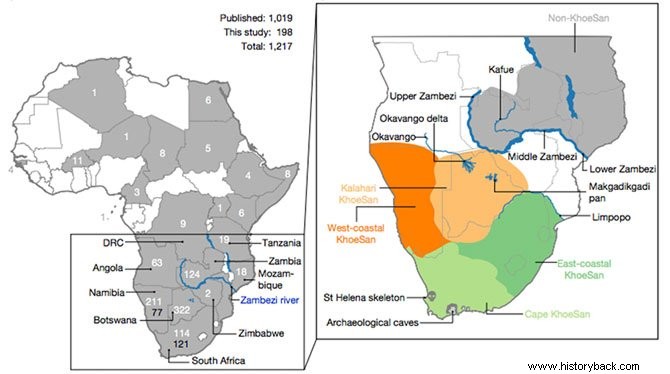An Australian study rewrites the dawn of modern man by identifying the exact place of its appearance through the analysis of DNA.
The first "homeland" of modern man was located in a large area of southern Africa, in present-day northern Botswana, where our ancestor lived between 200,000 and 130,000 years ago, before migrating.

And it has been for 70,000 years .
This is revealed by a study published in Nature by researchers led by Vanessa Hayes , by the Australian Garvan Institute of Medical Research and the University of Sydney , together with the Italian Benedetta Baldi .
"We have known for a long time that modern man appeared in Africa about 200 thousand years ago , but we did not know exactly where this homeland was ", explained at the press conference Hayes illustrating the work on the roots of our family tree, that of Homo sapiens sapiens .
"For the first time a research circumscribes the place of origin of modern man and is consistent with our expectations", comments Stefano Benazzi , director of the Osteoarchaeology laboratory and Paleoanthropology of the University of Bologna . It was known that the first anatomically modern humans appeared in Africa about 200,000 years ago and previous genetic analyzes suggested southern Africa but without identifying the precise area.
"What has long been debated is the exact place of their appearance", notes Hayes . The discovery was made possible on the population living in that area today, by analyzing the DNA that is transmitted only by the mother and is present in the energy units of the cells, called mitochondria. By slowly accumulating changes over the generations, this DNA allows us to trace back to our ancestors . Thus we went back to the first groups of modern men, the so-called "L0" lineage. Combining the era in which the L0 lineage emerged with the geographical distribution of these populations, it was discovered that, 200,000 years ago , the first group of Homo sapiens lived south of the Zambezi river , in the north of Botswana , which today is an arid region but at the time was a vast humid and lush area.
“Another very interesting aspect - observes Benazzi - is having shown the context in which the Sapiens they evolved 200,000 years ago , that is, in an area that was humid at the time and these characteristics affect the conservation of fossil remains, telling us that we cannot find them there because they have not managed to preserve themselves ".
To investigate the environment in which the first Sapiens lived , the researchers used computer simulations on the climate of the time. It thus emerged that climate changes, due to the oscillation of the earth's axis which changed the incidence of solar radiation in the southern hemisphere, have opened green "corridors" in the previously drier regions, leading populations to migrate first to the north-east, about 130,000 years ago, and then to the south-west, about 110,000 years ago.
However, according to Benazzi , "There is a single fact that contrasts with this reconstruction" and is the discovery in Israel, published in 2018, of the fragment of a jaw attributed to Homo sapiens, and dating back to 170-180 thousand years. This means, for the expert, either that "there was another corridor that opened earlier or that this fragment belonged to a Sapiens more archaic , as some scholars hypothesize ”.
